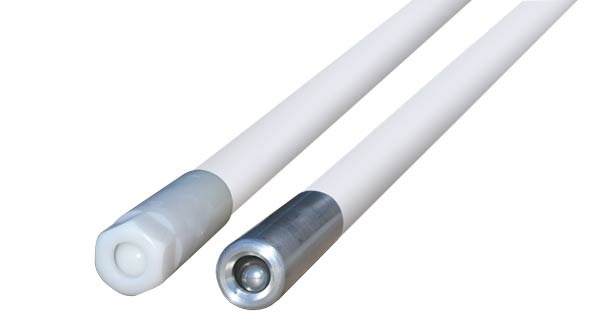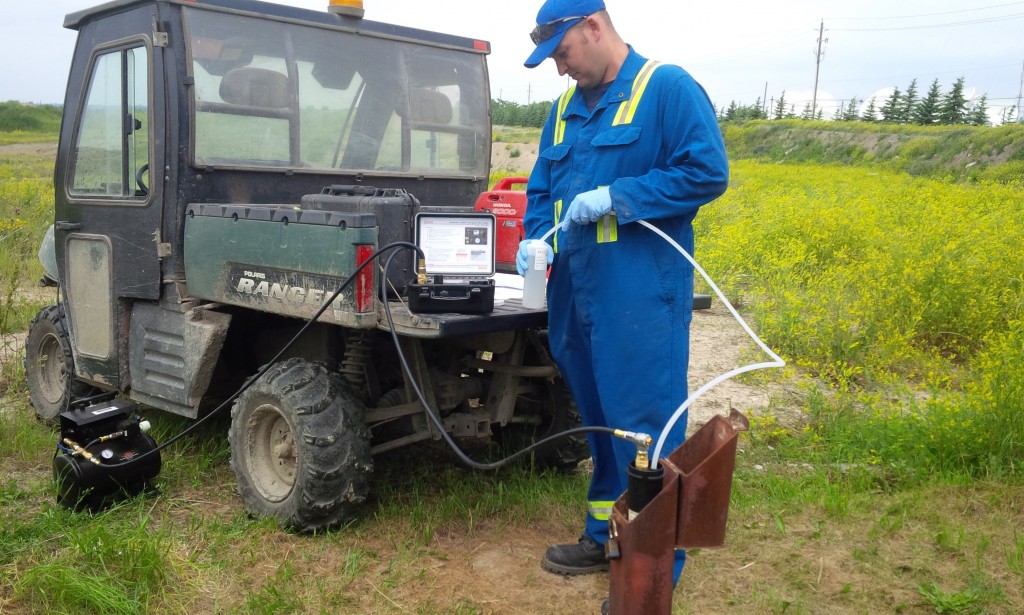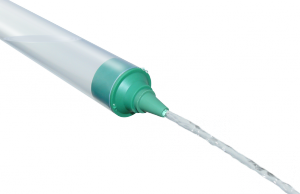There is much to think about before selecting a groundwater sampler for your project.
Here are just a few things you probably need to consider:
- What you are sampling for: general chemistry, volatiles, metals, etc.
- Type of sample you need: low/high volume, purging or grab
- Sampling depth
- Your sampling frequency: portable or dedicated equipment
- Characteristics of the well you are monitoring: type, diameter and depth to water
- Ease of sampler operation, repairs in-field, decontamination
- Local regulations, requirements, protocols, SOPs
- Sampling environment/site logistics
- Your budget
Thankfully, Solinst has a wide range of groundwater samplers to choose from, so you’ll be able to find one that meets your criteria.
Solinst Groundwater Samplers
Solinst groundwater samplers can generally be categorized into five different types:
Peristaltic Pumps:
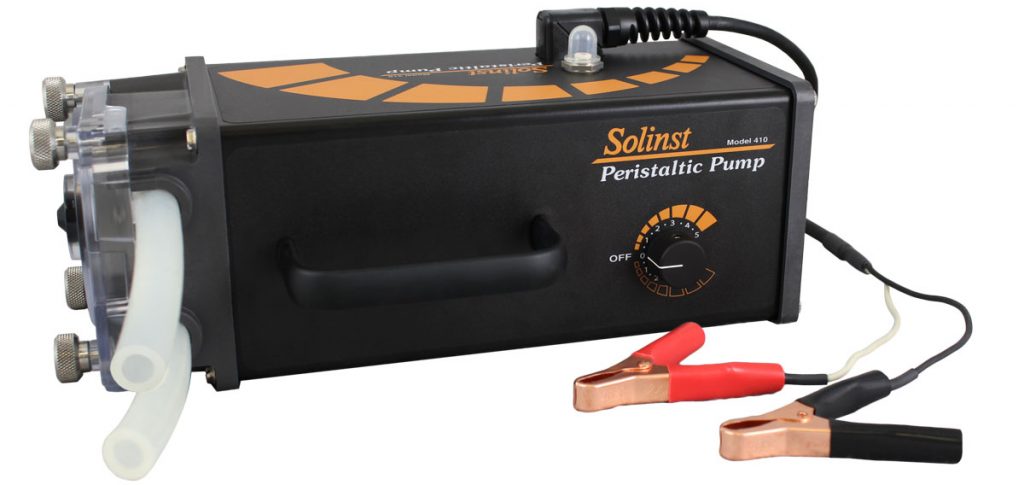
Solinst Model 410 Peristaltic Pump
Peristaltic pumps use mechanical peristaltic operation to obtain a sample. Rotating rollers depress silicone tubing, creating a vacuum, which displaces any fluid or gas in the chosen direction.
Solinst offers the Model 410 Peristaltic Pump. The Model 410 is very portable, can be used for purging, low flow and regular flow sampling of shallow groundwater.
Submersible Pumps:
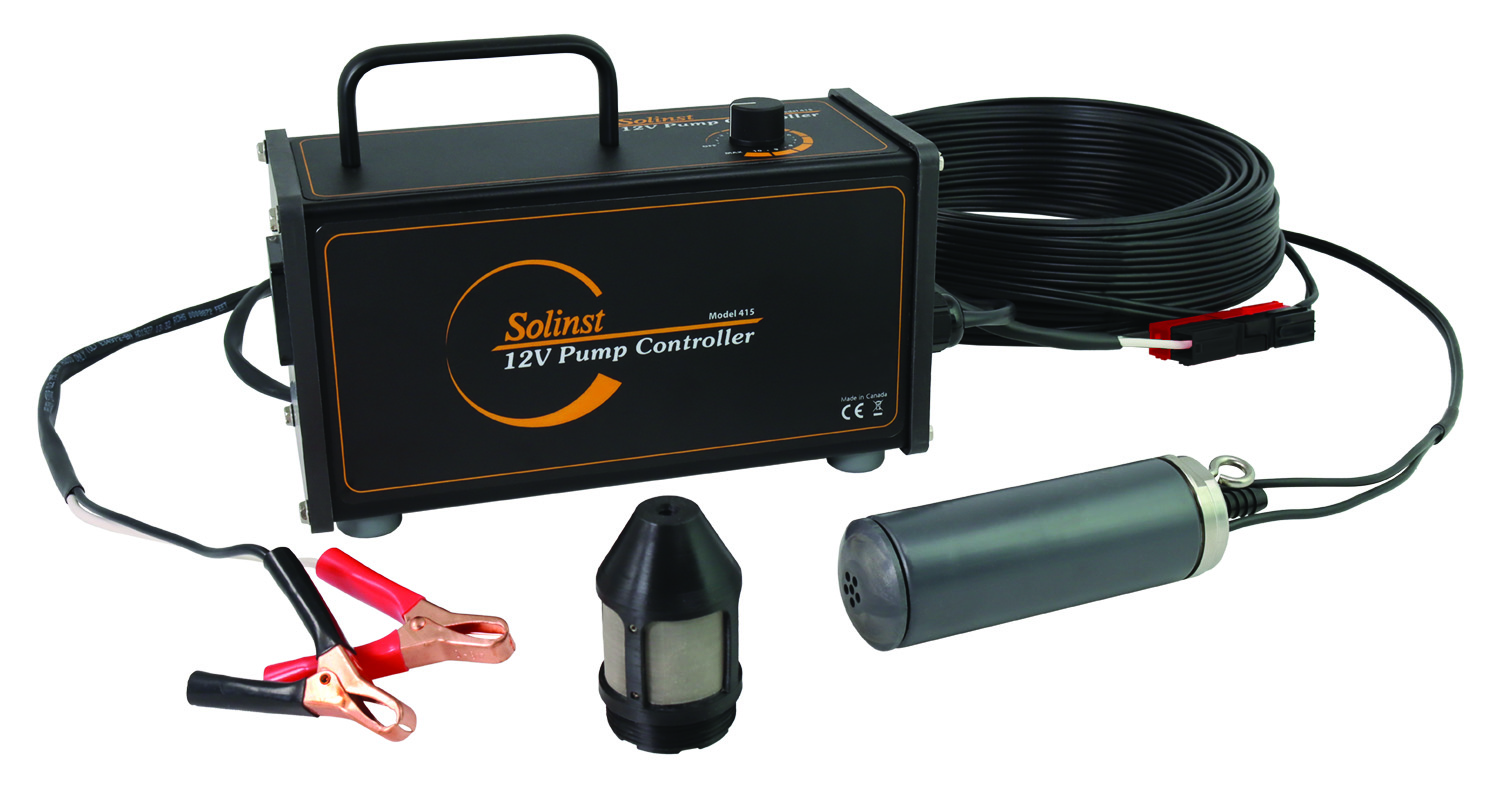
Model 415 12V Submersible Pump
Submersible pumps use a rotating motor impeller to obtain a groundwater sample. As the voltage is increased at the pump’s controller at surface, the pump’s motor turns faster and increases the flow rate.
Solinst offers the Model 415 12V Submersible Pump. The Model 415 is portable and simple to operate for efficient purging and sampling in 2” OD monitoring wells. A dedicated well cap is also available.
Inertial Pumps:
Inertial pumps retrieve samples by repeatedly lowering and raising a footvalve connected to tubing. Water enters the tubing on the downward stroke and is retained by the footvalve on the upward stroke, causing water to gradually rise through the tubing to surface.
Solinst offers the Model 404 Inertial Pump in various diameters with the option of stainless steel or Delrin® footvalves. It is an inexpensive, easy-to-operate pump for purging and sampling, and is ideal for dedication.
Pneumatic Pumps:

Solinst Model 407 Bladder Pumps
Pneumatic pumps are air/gas driven. The pumps are connected to drive and sample tubing. When lowered, hydrostatic pressure fills the pumps with water. Air/gas is applied to the drive tubing forcing the water out of the pump and up the sample tubing. The system is vented and water refills the pump. Repeated drive/vent cycles bring samples to the surface.
The Solinst Model 407 Bladder Pumps and Model 408 Double Valve Pumps are our options. These pumps are ideal for low flow sampling at greater depths and for obtaining representative VOC samples. There are portable and dedicated options.
Check out our Technical Bulletin that discusses the differences between Model 407 Bladder Pumps and Model 408 Double Valve Pumps.
Grab Samplers:
Grab samplers obtain samples of a set volume at a single depth. Typically, the sampler is lowered to depth, and then simply raised back to the surface. A check ball(s) retain the sample as the sampler is lifted.
Solinst has a few options: the Model 428 BioBailer™, Model 429 Point-Source Bailer, and the Model 425 Discrete Interval Samplers. These samplers are great for spot samples, and no-purge sampling. They are easy to dedicate or transport.
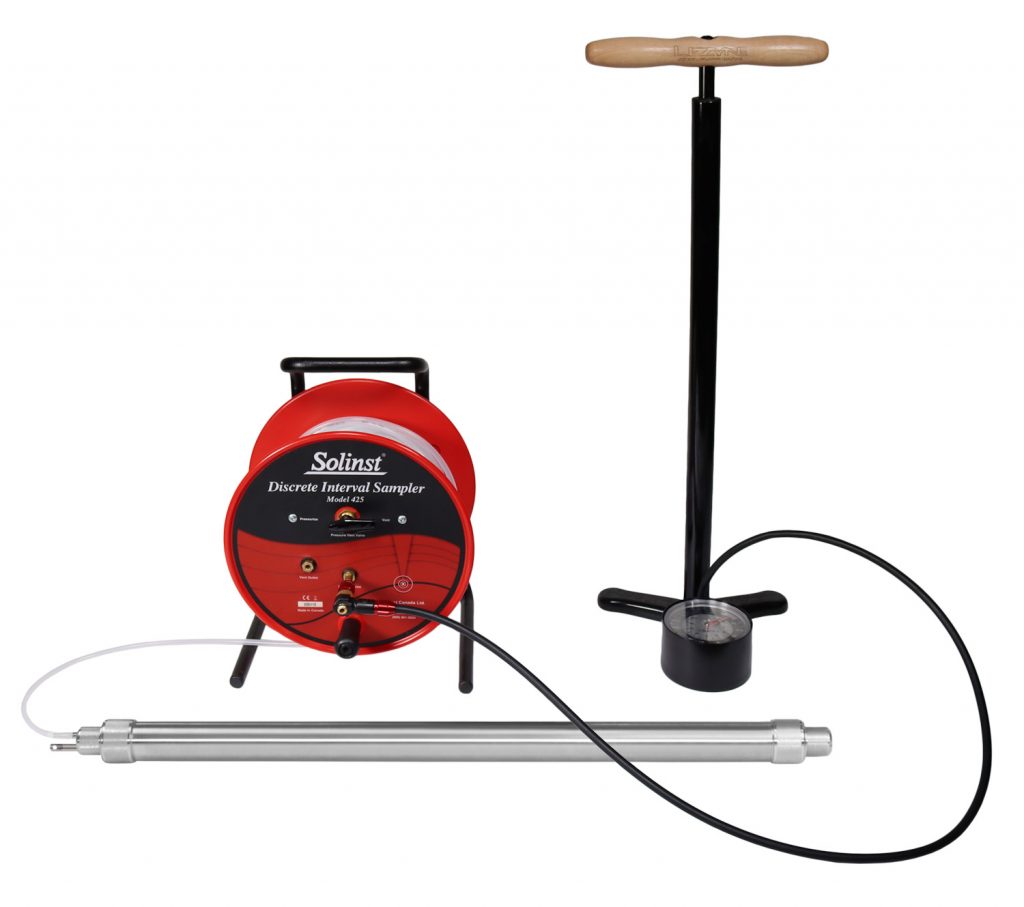
Solinst Model 425 Discrete Interval Sampler
A Quick Q&A for Choosing a Groundwater Sampler
Remembering all of the things you may need to consider, here are five quick questions and answers that may help you decide which Solinst groundwater sampler you need.
1. What type of sample do you need?
If you only need a small volume, and are not required to purge the well, a grab sampler is your best option. This means a 428 BioBailer, 429 Point Source Bailer, or 425 Discrete Interval Samplers.
If you need a higher volume, or if purging is required, all other samplers are options:
- 404 Inertial Pump,
- 410 Peristaltic Pump,
- 415 12V Submersible Pump,
- 407 Bladder Pump, and
- 408 Double Valve Pump.
2. What chemistry or parameters are of concern?
Are you looking at general chemistry only? Then you could really use any of the sampler options.
But to get your money’s worth, it is best to go with the more inexpensive or simpler options of the:
- 404 Inertial Pump,
- 410 Peristaltic Pump,
- 415 12V Submersible Pump,
- 428 BioBailer, or
- 429 Point Source Bailer.
When you are looking to get extremely representative samples, especially when sampling for VOCs, then we recommend the 407 Bladder Pump, 408 Double Valve Pump, or 425 Discrete Interval Samplers. Each of these limits the sample from coming into contact with air and prevents degassing of the sample.
Bladder Pumps and Double Valve Pumps are excellent for low flow sampling, which is a method most accepted by regulators for representative VOC sampling. However, recent studies have shown that no-purge samplers, such as the 425 Discrete Interval Sampler, are capable of providing samples comparable in quality to those obtained by low flow methods.
For further explanation, Solinst has created three videos that show the operating principles of the Model 407 Bladder Pump, 408 Double Valve Pump, as well as the standard Model 425 Discrete Interval Sampler. Be sure to look for them on our YouTube Channel.
3. To what depth are you measuring?
If you are sampling to a depth greater than 40 metres or 130 feet, then it is most recommended to use a 407 Bladder Pump or 408 Double Valve Pump. The 425 Discrete Interval Sampler is also an option. The Model 425-D Deep Sampling Discrete Interval Sampler can sample from submerged depths of 1200 m (4000 ft) in some cases!
The 410 Peristaltic Pump is most limited; in ideal conditions, it can lift from 10 metres or 33 feet at sea level.
Note: A Power Winder connected to a 407, 408 or 425 tubing reel is a helpful way to ease the lowering and raising of a sampler at greater depths.
4. How often are you sampling at your site?
If you are only sampling once, or sampling is sporadic, then portable options are better suited. These are all very portable options:
- 410 Peristaltic Pump,
- 415 12V Submersible Pump,
- 429 Point Source Bailer,
- 425 Discrete Interval Sampler,
- 407 Bladder Pump, and
- 408 Double Valve Pump.
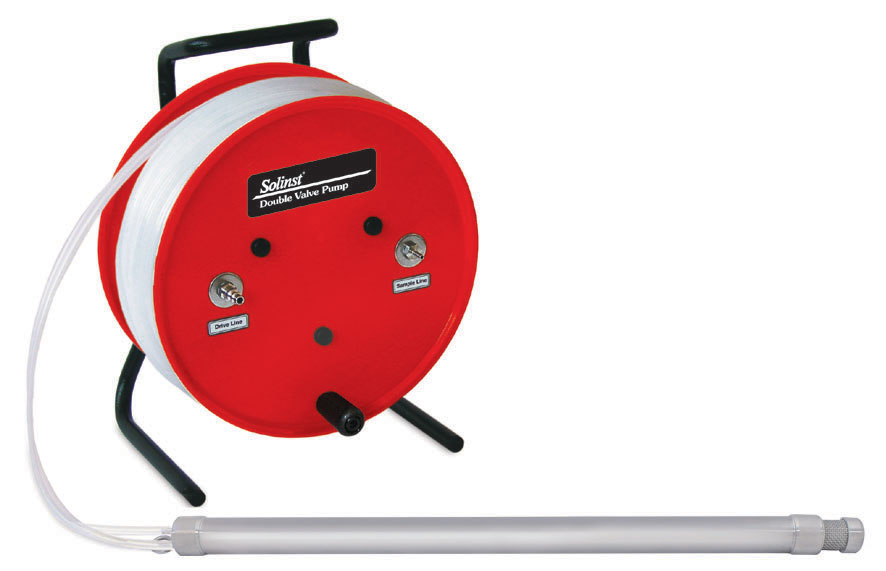
Solinst Model 408 Double Valve Pump on a Portable Tubing Reel
If you are going to be sampling quarterly or more often, then a dedicated option is better. For shallow applications, you could choose a 404 Inertial Pump, 428 BioBailer, or 415 12V Submersible Pump using a dedicated well cap. For deeper applications, choose a 407 Bladder Pump or 408 Double Valve Pump, also using a special wellhead assembly designed for dedication.
The 428 BioBailer is a good shallow sampling option for either situation. It is inexpensive and easy to dedicate, but also has the advantage of being biodegradable if only used once then thrown away.
5. What is your sampling budget?
The least expensive options are the:
- 404 Inertial Pump,
- 410 Peristaltic Pump,
- 428 BioBailer and,
- 429 Point Source Bailer.
However, all of these samplers are limited by the depths from which they can sample (<30 metres, 100 feet).
The 12V Submersible Pump is fairly inexpensive, and can reach depths to 36.5 metres (120 feet) below ground surface. It provides high purging and sampling rates, which can save you time and money in the end. It is a great option for sampling for general chemistry using the three volume purge sampling protocol.
The most expensive options are the 407 Bladder Pump, 408 Double Valve Pump, and 425 Discrete Interval Samplers, but they all provide high quality samples to depths up to 150 metres (500 feet), or more with the Model 425-D Deep Sampling Discrete Interval Sampler.
Narrowing Down Your Groundwater Sampler of Choice
Now that we’ve hopefully given you a better idea of what sampler you need, make sure to check out all of the resources available on our website.
For example, Solinst has prepared a convenient chart that summarizes the features of all Solinst Groundwater Samplers. In it, you will find the types of materials the samplers are constructed from, their dimensions, and depth limitations.
Also, never hesitate to contact one of our technical sales representatives to learn more about Solinst Groundwater Samplers!

